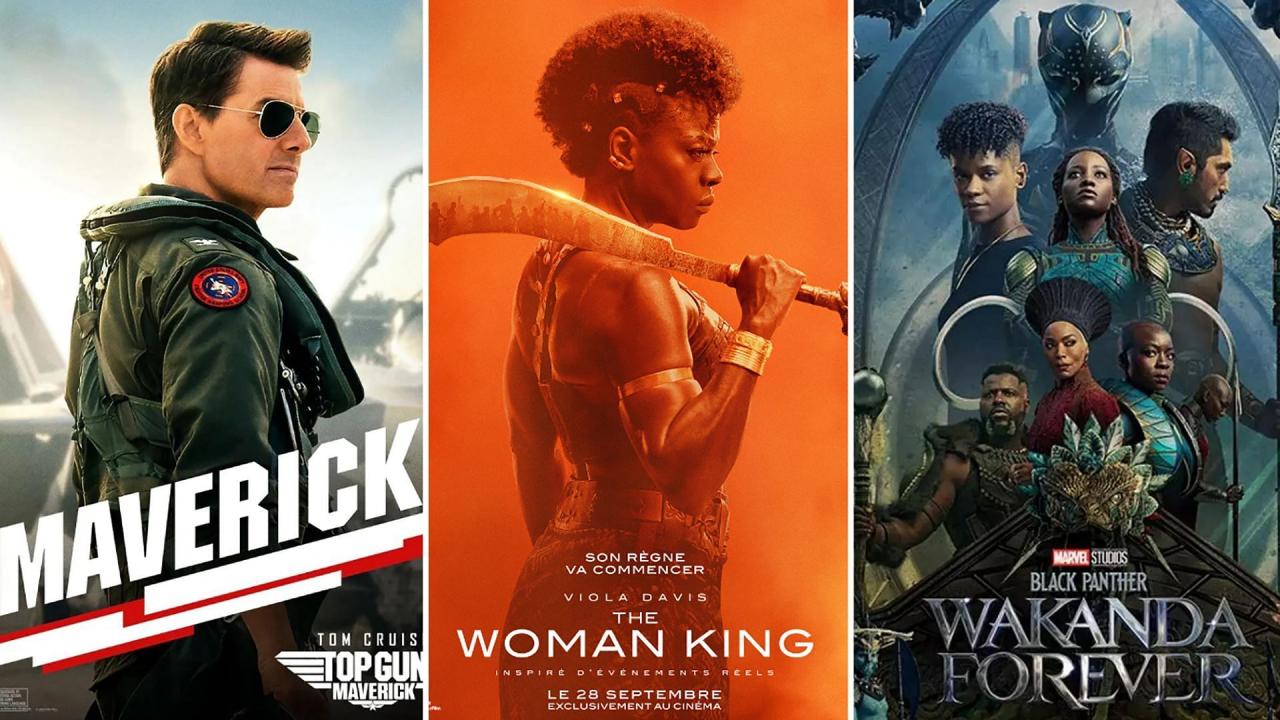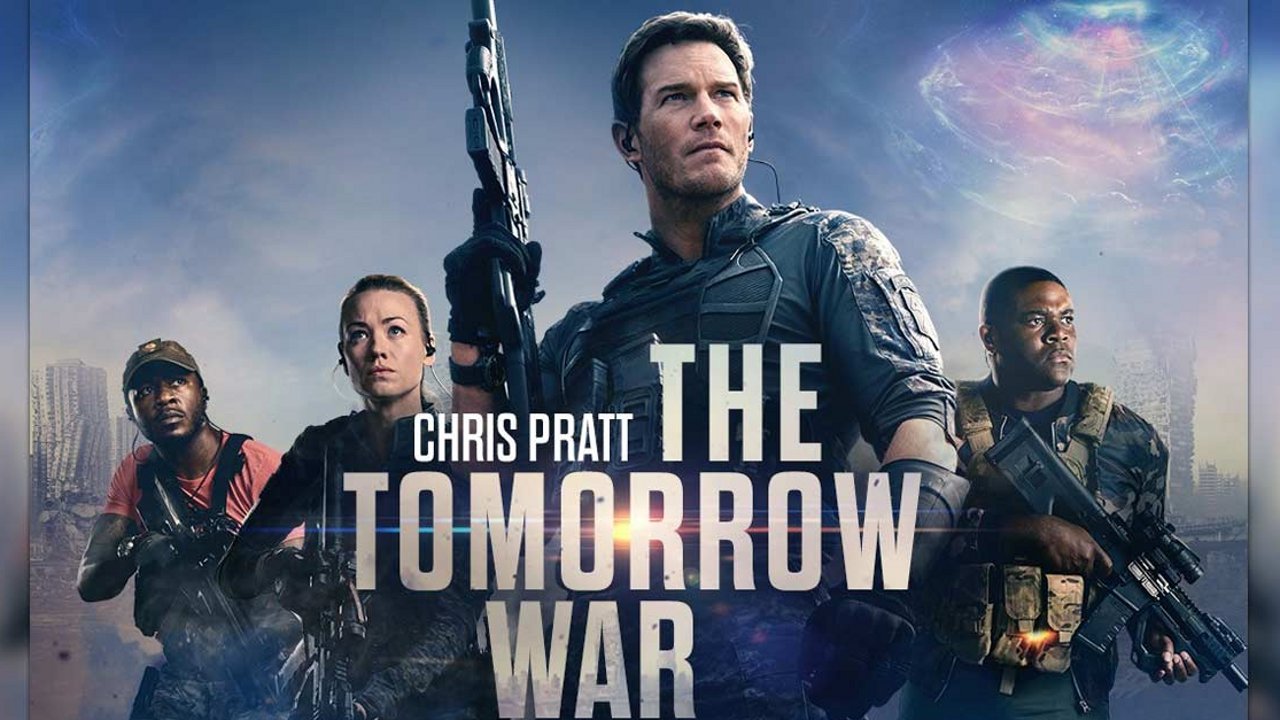Top U.S. 21+ Action Movies delve into the thrilling world of R-rated American action cinema. This exploration examines the genre’s evolution, from its classic roots to its modern, technologically advanced iterations. We’ll analyze box office successes, critical acclaim, and the cultural impact of these films, exploring recurring themes, influential figures, and the impact of foreign cinema influences.
This guide provides a detailed look at the highest-grossing films, critically acclaimed titles, and the technological advancements that have shaped the landscape of American action cinema. We’ll also examine the portrayal of violence, diverse representation, and the enduring themes that make these movies so captivating to audiences worldwide.
Defining “Action Movie” in the US Context
The American action movie genre is a dynamic and multifaceted category, encompassing a wide range of subgenres and stylistic approaches. Defining it precisely requires considering not only the presence of action sequences but also the broader narrative context and the specific cinematic techniques employed. While a clear-cut definition remains elusive, several key elements consistently characterize US action films.
Action movies in the US typically feature protagonists engaging in intense physical feats, often involving violence, chases, and elaborate stunts. These sequences are central to the narrative, driving the plot forward and showcasing the characters’ skills and resilience. However, the genre’s appeal extends beyond mere spectacle; successful action films frequently incorporate elements of other genres, such as thriller, sci-fi, comedy, or drama, enriching the narrative and appealing to broader audiences. The focus on physical prowess and thrilling action sequences differentiates it from other genres, but the inclusion of other elements adds layers of complexity and thematic depth.
Subgenres of US Action Movies
The US action movie landscape is incredibly diverse, with numerous subgenres that have emerged and evolved over time. These subgenres often blend elements, resulting in hybrid forms. For instance, the “buddy cop” subgenre combines action with comedy and focuses on the dynamic between two law enforcement officers. Similarly, “spy thrillers” blend action with espionage and political intrigue, while “disaster movies” incorporate large-scale action sequences within the context of a catastrophic event. The superhero film, a dominant force in recent years, combines action with fantastical elements and often explores themes of heroism and morality. These diverse subgenres demonstrate the genre’s adaptability and its ability to cater to a wide range of tastes.
Comparison with International Action Cinema
While the US action movie industry is globally influential, significant differences exist between American action films and those produced in other countries. For example, Hong Kong action cinema, renowned for its innovative fight choreography and wire-fu techniques, often prioritizes intricate martial arts sequences over extensive use of firearms. Conversely, Japanese action films sometimes incorporate elements of samurai tradition or yakuza culture, shaping the narrative and action sequences in unique ways. European action films frequently take a more grounded, realistic approach, often focusing on gritty realism and social commentary. These international variations demonstrate the genre’s global adaptability and the diverse approaches to depicting action on screen.
Evolution of the US Action Movie
The US action movie genre has undergone a significant evolution over the past few decades. Early action films, often featuring Westerns or war films, focused on straightforward narratives and relatively simple action sequences. The rise of martial arts films in the 1970s and 80s, exemplified by the works of Bruce Lee and Jackie Chan, significantly impacted the genre, introducing more elaborate fight choreography and a greater emphasis on athleticism. The 1980s and 90s saw the rise of the “action hero,” often characterized by larger-than-life figures with exceptional physical abilities and a morally ambiguous nature, exemplified by characters like John Rambo and Arnold Schwarzenegger’s Terminator. More recently, the genre has seen a shift towards a more nuanced approach, incorporating complex characters, sophisticated storytelling, and a greater emphasis on realism in some instances, while others continue to embrace the spectacle and larger-than-life characters of the past. The ongoing integration of CGI and advanced special effects has also dramatically altered the visual landscape of action films, allowing for increasingly spectacular and ambitious sequences.
Critical Acclaim and Awards: Top U.S. 21+ Action Movies
Critically acclaimed action films often transcend the genre’s typical tropes, offering compelling narratives, complex characters, and innovative action sequences. These films achieve recognition not just for their spectacle but for their artistic merit and cultural impact, garnering awards and nominations from prestigious organizations like the Academy Awards, Golden Globes, and BAFTAs. This section explores some of these highly regarded films, examining common themes and identifying recurring figures in their production.
Critically acclaimed action films often share certain thematic elements. While the core of the genre remains physical conflict and high-stakes situations, successful films elevate these elements by incorporating compelling narratives with morally ambiguous characters, exploring themes of justice, redemption, or the consequences of violence. The best action movies often blend visceral action with thought-provoking themes, creating a richer and more engaging experience for the viewer.
Examples of Critically Acclaim 21+ Rated US Action Movies
Several 21+ rated US action movies have achieved significant critical acclaim and won prestigious awards. The following list is not exhaustive, but it highlights some notable examples. Award wins and nominations vary greatly depending on the year and the awarding body. This list focuses on films with significant critical praise, reflecting a balance between action and narrative quality.
- The Dark Knight (2008): Won two Oscars (Best Supporting Actor and Best Sound Editing) and received numerous nominations. The film is praised for its complex villain, realistic portrayal of urban crime, and innovative action sequences.
- Mad Max: Fury Road (2015): Won six Oscars (including Best Film Editing, Best Sound Mixing, and Best Costume Design) and was lauded for its groundbreaking action sequences, strong female lead, and visually stunning post-apocalyptic setting.
- Logan (2017): Received widespread critical acclaim for its mature and emotional story, powerful performances, and innovative approach to superhero action.
- Heat (1995): Considered a classic crime thriller with intense action sequences, complex characters, and a gripping narrative. While not showered with Oscars, it holds a strong legacy and consistently ranks highly among critics’ lists.
- Die Hard (1988): A foundational film in the action genre, often cited for its innovative blend of action, suspense, and humor. It’s consistently praised for its influential impact on the genre, although major awards were less common for action films at that time.
Recurring Directors, Actors, and Production Companies
Certain directors, actors, and production companies have consistently delivered critically acclaimed action films. Their involvement often signals a higher likelihood of quality and success.
- Christopher Nolan: Known for his intellectually stimulating and visually impressive action films, such as The Dark Knight trilogy and Inception.
- Quentin Tarantino: While not strictly an action director, his films often feature intense and stylized action sequences, exemplified in Kill Bill and Inglourious Basterds.
- Ridley Scott: A veteran director with a long history of delivering impactful action sequences, particularly in films like Blade Runner 2049 and Gladiator.
- Tom Cruise: A leading action star known for performing many of his own stunts and consistently delivering high-octane performances.
- Leonardo DiCaprio: Has starred in several critically acclaimed films with action elements, such as Django Unchained and The Revenant.
- Warner Bros. Pictures: A major studio that has released many critically acclaimed and commercially successful action films.
- 20th Century Studios: Another major studio with a notable track record in producing successful action movies.
Impact of Technology on Action Movies
The evolution of American 21+ action cinema is inextricably linked to advancements in technology. From the rudimentary stunt work and practical effects of classic films to the hyper-realistic CGI spectacles of modern blockbusters, technological innovation has fundamentally reshaped the genre, influencing not only what’s possible on screen but also how audiences experience and perceive action sequences. This transformation is evident in the shift from a focus on raw physicality to increasingly elaborate and fantastical displays of violence and heroism.
Technological advancements have profoundly impacted the creation and reception of action films. The integration of special effects and CGI has allowed filmmakers to realize increasingly ambitious and complex action sequences that were previously unimaginable. This has resulted in a significant shift in the aesthetic and narrative possibilities within the genre. The rise of CGI has, however, also sparked debates regarding the authenticity and artistry of action filmmaking.
The Rise of CGI and Special Effects
The impact of CGI on 21+ action movies is undeniable. Early action films relied heavily on practical effects, often involving meticulously planned stunts and elaborate set pieces. Films like *The French Connection* (1971) showcased thrilling car chases achieved through real-world driving and skilled camerawork. In contrast, modern films such as *Mad Max: Fury Road* (2015) and the *Fast and Furious* franchise blend practical stunts with extensive CGI to create sequences of unprecedented scale and visual complexity. The seamless integration of CGI allows for impossible feats, creating scenarios that would be too dangerous or expensive to achieve practically. This has expanded the boundaries of action filmmaking, permitting sequences involving fantastical elements, large-scale destruction, and superhuman abilities. For example, the gravity-defying stunts in *Mission: Impossible – Fallout* (2018) would have been impossible without the aid of extensive CGI enhancement and digital compositing.
Comparing Action Sequences Across Eras
Older action films, often characterized by gritty realism and a focus on practical effects, emphasized the physical prowess of the actors and the skill of the stunt performers. The visceral impact of these scenes stemmed from the tangible risk involved and the sense of immediacy created by on-location filming. Consider the hand-to-hand combat in *The Raid: Redemption* (2011), a film that prioritizes practical fight choreography and delivers a brutal, visceral viewing experience. In contrast, modern action films frequently rely on CGI to enhance or replace practical stunts, allowing for more spectacular but sometimes less grounded sequences. The visual spectacle of films like *Avengers: Endgame* (2019) relies heavily on CGI to depict large-scale battles involving superhuman abilities and fantastical creatures, offering a visually stunning but potentially less visceral experience compared to its predecessors.
Technological Advancements and Filming Techniques
Technological advancements have revolutionized the way action scenes are filmed and perceived. High-speed cameras capture intricate details of fight choreography, allowing for slow-motion shots that highlight the skill and precision of the performers. Advanced camera stabilization systems enable smooth, dynamic shots even during complex action sequences, enhancing the viewing experience. Furthermore, the use of virtual production techniques, such as LED walls and real-time rendering, allows filmmakers to create immersive environments and manipulate the visual landscape during filming, eliminating the need for extensive post-production work. This technique is increasingly used in modern action films, allowing for more efficient and creative filmmaking. The increased use of drones and aerial photography has also expanded the scope and visual possibilities of action sequences, providing unique and dynamic perspectives previously unavailable.
Cultural Impact and Representation
The cultural impact of R-rated US action films is multifaceted, extending beyond simple entertainment to shape perceptions of violence, heroism, and societal issues. These films often reflect and, to a degree, influence prevailing cultural values and anxieties, both domestically and internationally. Their global reach makes them powerful agents of cultural exchange, albeit with varying degrees of interpretation and reception across different societies.
These films’ influence is evident in the proliferation of action-oriented video games, television shows, and other media. The stylistic tropes and narrative structures popularized in R-rated action movies—such as the lone hero battling overwhelming odds, the use of advanced weaponry, and elaborate fight choreography—have become widely imitated and adapted across numerous platforms. This pervasive influence underscores the genre’s deep penetration into popular culture.
Representation of Diverse Characters and Storylines, Top U.S. 21+ Action Movies
The representation of diverse characters and storylines in R-rated US action films has evolved significantly, though inconsistencies remain. While early examples of the genre largely featured white male protagonists, contemporary productions have shown increasing efforts to incorporate characters from various ethnic and racial backgrounds, sexual orientations, and genders. However, these efforts are not without their criticisms. Often, diversity is superficial, with characters of color or LGBTQ+ characters relegated to supporting roles or fulfilling stereotypical tropes.
A significant challenge lies in moving beyond tokenistic representation towards genuine inclusivity, where diverse characters are complex, fully realized individuals with agency and depth, rather than simply ticking boxes for diversity quotas. Films like *Black Panther* and *Wonder Woman* represent significant steps towards more inclusive narratives, demonstrating that commercially successful films can also prioritize diverse representation, but much work remains to be done across the genre as a whole. The ongoing debate around authentic representation highlights the need for continuous self-reflection and improvement within the industry.
Social and Political Commentary in Action Films
Many R-rated action films, while primarily focused on spectacle and entertainment, often incorporate subtle or overt social and political commentary. Themes of war, terrorism, government surveillance, and corporate greed frequently appear, often presented through allegorical narratives or stylized depictions of real-world conflicts. The use of action as a vehicle for exploring these themes can be highly effective, engaging audiences on an emotional level while simultaneously raising critical questions about contemporary society.
For example, films such as *Zero Dark Thirty* (though controversial for its depiction of torture) and *The Hurt Locker* grapple with the psychological toll of warfare and the moral ambiguities inherent in military operations. Similarly, films dealing with dystopian futures or corporate conspiracies often serve as cautionary tales, highlighting potential societal dangers and prompting reflection on current political and economic structures. The effectiveness of this commentary, however, is often dependent on the film’s execution and its ability to balance action sequences with meaningful thematic exploration. A poorly executed attempt at social commentary can easily become lost amidst the explosions and fight scenes.
Themes and Motifs in 21+ Action Films
American R-rated action films frequently explore complex themes beyond simple good versus evil narratives, adding depth and resonance to their high-octane plots. These recurring motifs tap into audience anxieties and desires, contributing significantly to the genre’s enduring popularity. The exploration of these themes often elevates the action sequences from mere spectacle to emotionally engaging experiences.
Recurring themes often intertwine and build upon each other, creating nuanced narratives. The use of specific motifs, such as particular types of weaponry or recurring visual elements, can reinforce these themes and contribute to the overall cinematic experience. The blend of action and thematic depth is what often distinguishes a memorable action film from a mere string of fight scenes.
Redemption and Second Chances
Many R-rated action films feature protagonists grappling with past mistakes or carrying significant burdens. The action sequences often serve as a vehicle for these characters to confront their demons and ultimately find redemption. This theme resonates with audiences because it speaks to universal desires for self-improvement and the possibility of overcoming adversity. For example, in *John Wick* (2014), the titular character’s violent actions are fueled by a desire to avenge the death of his puppy and find a measure of peace in a world that has wronged him. His path is one of violent retribution, but ultimately, it is also a path towards reclaiming his identity and finding a new purpose. Similarly, *Taken* (2008) shows Bryan Mills, a retired CIA agent, using his skills to rescue his kidnapped daughter, demonstrating a father’s desperate attempt at redemption for past failures.
Justice and Revenge
The pursuit of justice, often tinged with revenge, is a powerful driving force in many R-rated action movies. These narratives explore the moral complexities of vigilantism and the consequences of taking the law into one’s own hands. The line between justice and revenge often blurs, leading to morally ambiguous characters and scenarios that challenge audience assumptions. *The Equalizer* (2014), featuring Denzel Washington as a former government agent, highlights this theme. His actions are driven by a desire to right wrongs, but his methods are often brutal and outside the bounds of the law. The film explores the ethical implications of his actions, forcing the audience to contemplate the nature of justice in a corrupt world. The same can be said for the *Punisher* franchise, where Frank Castle’s brutal war on crime operates in a grey area of morality.
The Anti-Hero
R-rated action films often feature morally compromised protagonists, who, despite their flaws and questionable methods, still manage to garner audience sympathy. These anti-heroes allow for exploration of complex moral dilemmas and offer a more realistic portrayal of human nature than traditionally heroic figures. The character of Jack Reacher in the *Jack Reacher* film series embodies this anti-hero archetype, a former military investigator operating outside the law, using his skills to solve crimes and right wrongs. His methods are often violent and morally ambiguous, but his dedication to justice, even if self-defined, makes him a compelling protagonist.
Technological Advancement and its Impact
The advancements in weaponry and technology are frequently highlighted, showcasing their role in shaping the action sequences and the overall narrative. This thematic element often serves to reflect anxieties about the future, the ever-increasing sophistication of weaponry, and the potential for both good and evil uses of technology. The *Terminator* franchise, for instance, uses advanced robotics and artificial intelligence as central plot devices, exploring the potential consequences of unchecked technological progress. Similarly, the James Bond films consistently showcase cutting-edge gadgets and technology, highlighting both their utility and their potential for misuse.
Evolution of Violence and Action Sequences
The depiction of violence in 21+ rated US action films has undergone a significant evolution, reflecting societal shifts, technological advancements, and changes in censorship and rating systems. Early action films often relied on suggestion and stylized fight choreography, while modern films frequently showcase graphic and realistic violence, blurring the lines between fantasy and reality. This evolution is complex and multifaceted, influenced by various factors.
The evolution of violence and action sequences in US action films is closely tied to the development of filmmaking technology and societal attitudes toward violence. Early action films, such as those from the 1930s and 40s, often employed more subtle forms of violence, relying on editing techniques and suggestive imagery rather than explicit displays of gore. The Hays Code, a self-imposed censorship system, heavily influenced the portrayal of violence, limiting its graphic depiction. This led to creative uses of camera angles and editing to convey the impact of violence without showing excessive detail. For example, a fight scene might focus on the aftermath of a blow rather than the blow itself.
Changes in Depiction of Violence: From Subtlety to Graphic Realism
The introduction of more sophisticated special effects and the loosening of censorship regulations throughout the latter half of the 20th century significantly altered the landscape of action cinema. The development of practical effects and later CGI allowed filmmakers to create increasingly realistic and graphic depictions of violence. Films like *RoboCop* (1987) and *Die Hard* (1988) pushed the boundaries of what was acceptable, showcasing more explicit violence than previous action films. This trend continued into the 21st century, with films like *The Matrix* (1999) and *John Wick* (2014) incorporating stylized yet visceral action sequences with high levels of graphic detail. The increased accessibility of technology also contributed to the rise of extreme violence in independent and low-budget action films, sometimes pushing the boundaries of what audiences find acceptable.
Impact of Censorship and Rating Systems
The implementation of the MPAA rating system in 1968 marked a turning point. The system allowed for a wider range of violence to be depicted in films, but also introduced a system of categorization, allowing studios to tailor their films to specific audiences. The introduction of the NC-17 rating, although rarely used in mainstream action films, served as a further indicator of what was considered excessive. The evolution of the rating system reflects a changing societal attitude towards violence, with a greater acceptance of its depiction in film, though always within the framework of the rating system’s guidelines. The system itself, however, has been subject to criticism regarding its consistency and effectiveness in regulating the content of films.
Technological Advancements and their Influence
Technological advancements in filmmaking have played a crucial role in shaping the evolution of action sequences. The development of high-speed cameras, improved special effects, and advanced editing techniques have enabled filmmakers to create increasingly complex and realistic action sequences. Early action films relied heavily on stunt work and clever camera angles to create the illusion of violence. Modern films, however, utilize CGI and other digital effects to enhance the realism and spectacle of action sequences, often creating visually stunning but potentially hyper-realistic depictions of violence. The evolution of weaponry and military technology has also influenced the portrayal of violence in action films, reflecting real-world advancements in weaponry and tactical strategies.
Notable Actors and Directors in the Genre

The 21+ action movie landscape in the US has been shaped by a constellation of talented actors and directors who have pushed creative boundaries and redefined the genre’s conventions. Their contributions, spanning decades, are evident in the enduring popularity and cultural impact of numerous films. This section will highlight some key figures and their significant contributions.
The success of a 21+ action film hinges on a compelling narrative, believable characters, and, of course, spectacular action sequences. The individuals discussed below have demonstrably mastered these aspects, leaving an indelible mark on the genre. Their stylistic choices, recurring motifs, and innovative approaches to filmmaking have influenced countless subsequent productions.
Key Actors in 21+ Action Films
Several actors have become synonymous with the 21+ action genre, consistently delivering compelling performances and pushing physical boundaries. Their screen presence and charisma have elevated many films to iconic status.
For example, Bruce Willis’s portrayal of John McClane in the Die Hard franchise defined a new archetype of the everyman action hero, a relatable character thrust into extraordinary circumstances. His gruff charm and unwavering determination resonated with audiences, establishing him as a major force in the genre. Similarly, Arnold Schwarzenegger’s larger-than-life persona and iconic one-liners in films like Terminator 2: Judgment Day and Predator established a new standard for physical action and comedic timing within the genre. Sylvester Stallone, with his roles in the Rocky and Rambo franchises, demonstrated the emotional depth that can be combined with intense physical action, showcasing vulnerability alongside superhuman strength. These actors, among others, contributed to the diversification of the action hero archetype, moving beyond the purely stoic and invincible figure.
Key Directors in 21+ Action Films
Directors play a crucial role in shaping the visual style and narrative structure of action films. Their creative vision often defines the genre’s aesthetic and thematic elements.
John McTiernan, director of Die Hard and Predator, is known for his innovative action sequences and suspenseful storytelling. His use of practical effects and clever camera work created iconic moments that continue to influence filmmakers. James Cameron, with films such as Terminator 2: Judgment Day and True Lies, demonstrated a mastery of visual effects and a talent for crafting high-octane action sequences that seamlessly integrated advanced technology. His films often explored complex themes of technology, identity, and human resilience within the action framework. Quentin Tarantino, while not strictly an action director, has significantly impacted the genre through his stylized violence, witty dialogue, and unconventional storytelling in films like Kill Bill. His films have influenced a generation of filmmakers who incorporate similar stylistic elements into their own work.
Box Office Performance and Trends

The box office success of R-rated action movies in the US has fluctuated significantly over time, influenced by a complex interplay of factors including marketing strategies, critical reception, the overall cinematic landscape, and audience preferences. Analyzing these trends reveals valuable insights into the genre’s evolution and its enduring appeal.
The commercial performance of R-rated action films is not solely dependent on the quality of the action sequences themselves. While spectacular stunts and innovative fight choreography are crucial elements, other factors play a significant role in determining a film’s box office success.
Factors Influencing Box Office Success
Several key factors contribute to the box office performance of R-rated action films. Strong marketing campaigns that effectively target the desired demographic are essential. Positive critical reviews and word-of-mouth buzz can significantly boost ticket sales. The presence of established, bankable stars can also drive audience interest. Furthermore, the timing of a film’s release, avoiding direct competition with other major releases, is a crucial strategic consideration. Finally, the overall cultural relevance and appeal of the film’s themes and narrative contribute to its commercial viability.
Examples of Successful and Unsuccessful Films
The success of films like the John Wick franchise demonstrates the power of a well-executed blend of action, compelling characters, and smart marketing. These films consistently exceeded box office expectations, proving the enduring appeal of well-crafted action within the R-rated space. Conversely, some R-rated action films, despite boasting impressive action sequences and star power, have underperformed due to factors such as negative critical reviews, weak marketing, or poor timing of release. For example, a poorly-received sequel can severely damage the franchise’s box office potential.
Trends in Box Office Revenue Over Time
While specific box office numbers fluctuate wildly from year to year, a general trend can be observed. The highest-grossing R-rated action films often feature established franchises or stars, leveraging pre-existing audience loyalty and recognition. The impact of streaming services on theatrical releases has also had a noticeable impact, sometimes leading to lower box office returns than previously seen for comparable films. This shift necessitates a greater focus on innovative marketing and audience engagement strategies to counteract the convenience of at-home viewing options. The ongoing evolution of the action genre, including the incorporation of new technologies and stylistic approaches, will continue to shape future box office trends.
Subgenres within 21+ Action Movies
The 21+ action movie landscape is far from monolithic. While the common thread is high-octane action sequences, the specific narratives, character archetypes, and thematic concerns vary widely, resulting in a diverse array of subgenres. These subgenres often overlap and blend, creating hybrid films that defy easy categorization, but distinct characteristics generally allow for useful classification. Understanding these distinctions provides a richer appreciation for the breadth and depth of the genre.
The following sections detail some prominent subgenres within the 21+ US action film category, offering examples and highlighting key differentiating features.
Spy Thrillers
Spy thrillers, a staple of the action genre, typically center on espionage, covert operations, and international intrigue. These films often feature highly skilled agents, double-crosses, elaborate plots, and high-stakes missions involving national security or global power dynamics. The emphasis is less on raw, visceral violence and more on suspense, strategic planning, and the psychological warfare inherent in the spy world. Examples include the James Bond franchise (particularly the later, more mature entries), Mission: Impossible series, and Tinker Tailor Soldier Spy. Unlike some other action subgenres, spy thrillers frequently prioritize intricate plots and character development alongside the action sequences.
Crime Dramas
Crime dramas within the 21+ action category often blend thrilling action sequences with complex narratives exploring the criminal underworld. These films may focus on bank robberies, heists, gang wars, or the inner workings of organized crime. While action is a significant component, the focus is often on character development, moral ambiguity, and the consequences of criminal activity. Examples include Heat, The Departed, and Reservoir Dogs. These films frequently delve into the motivations and psychological complexities of their characters, differentiating them from more straightforward action fare.
Superhero Films
Superhero films, a hugely popular and lucrative subgenre, feature characters with extraordinary abilities battling villains and often saving the world. These films frequently blend spectacular action sequences with elaborate visual effects and compelling narratives exploring themes of heroism, responsibility, and morality. The action is often stylized and fantastical, defying the constraints of realism. Examples include The Dark Knight, Logan, and Captain America: The Winter Soldier. The significant investment in special effects and the reliance on established comic book narratives distinguish this subgenre.
War Films
War films within the 21+ category often depict the brutality and realities of warfare, showcasing intense action sequences within the context of conflict. These films frequently explore themes of patriotism, sacrifice, and the psychological toll of combat. While action is central, the focus is often on the human cost of war and the moral dilemmas faced by soldiers. Examples include Saving Private Ryan, Platoon, and Apocalypse Now. The realistic portrayal of violence and the exploration of complex themes differentiate this subgenre from others that prioritize spectacle.
Disaster Films
Disaster films blend action sequences with large-scale catastrophes, typically natural or man-made. The action often involves desperate attempts to survive the disaster, rescue efforts, and the struggle for survival against overwhelming odds. The scale of destruction and the focus on survival set these films apart. Examples include Twister, The Poseidon Adventure, and 2012. These films often employ impressive visual effects to depict the scale of the disaster and the intensity of the action sequences.
Influence of Foreign Cinema on US Action Films
The rise of the 21+ rated US action movie genre owes a significant debt to the stylistic and thematic innovations of foreign cinema, particularly from Hong Kong and other Asian countries. These influences, absorbed and reinterpreted, have profoundly shaped the visual language, narrative structures, and even the philosophical underpinnings of many American action films. The impact extends beyond simple imitation; it represents a cross-cultural exchange that enriched and diversified the genre.
The kinetic energy and acrobatic fight choreography of Hong Kong action cinema, spearheaded by directors like John Woo and Jackie Chan, significantly impacted the visual style of American action films. Woo’s balletic gun-fu, characterized by slow-motion, stylized violence, and a strong emphasis on brotherhood and morality, became a key influence. Chan’s comedic and inventive fight sequences, prioritizing physical humor and elaborate stunts, provided a counterpoint to the grittier, more serious styles. These influences, while distinct, both contributed to a more visually dynamic and less reliant on straightforward gun battles.
Hong Kong Action Cinema’s Impact on Gun Fu and Stunts
John Woo’s films, such as *A Better Tomorrow* and *The Killer*, introduced a visually arresting style that emphasized slow-motion, stylized gunplay, and operatic themes of loyalty and betrayal. This directly influenced films like *Hard Boiled* and, subsequently, American action movies such as *The Matrix* (the bullet-time effect is a clear homage), *Kill Bill*, and even elements of the *John Wick* franchise. Jackie Chan’s films, on the other hand, demonstrated the potential for incorporating elaborate, acrobatic stunts and comedic timing into action sequences, influencing films like *Rush Hour* and *Shanghai Noon*, which successfully blended Eastern and Western action styles.
The Influence of Japanese Action Cinema
Beyond Hong Kong, Japanese action cinema, particularly films emphasizing sword fighting and samurai epics, also left its mark. The precise and deadly swordplay seen in films like *Lady Snowblood* and various samurai films contributed to the heightened choreography and stylistic precision found in films such as *Kill Bill*, which directly references and incorporates these influences into its narrative and visual design. The emphasis on honor, revenge, and stylized violence present in these films found resonance in later American action movies.
Examples of Foreign Cinema’s Influence in Popular US Films
The impact of foreign action cinema isn’t confined to stylistic choices. The narrative structures, character archetypes, and thematic concerns found in foreign films have also influenced American productions. For example, the morally ambiguous anti-heroes, often grappling with internal conflicts and a sense of duty, common in many Hong Kong action films, became a popular trope in American action cinema. The complex narratives and morally grey areas explored in many foreign films also helped move American action films beyond simple good versus evil narratives.
Wrap-Up
Ultimately, the journey through Top U.S. 21+ Action Movies reveals a dynamic and evolving genre, constantly adapting to technological advancements and cultural shifts. From the explosive action sequences to the nuanced storytelling, these films reflect American society and entertain global audiences alike. This exploration highlights not only the commercial successes but also the cultural impact and artistic merit of this significant cinematic category.

![Upcoming 21+ Movies in [Year]](https://scholnews.com/wp-content/uploads/2025/01/0rC4a3_0xpeZBqD00-150x150.jpg)



